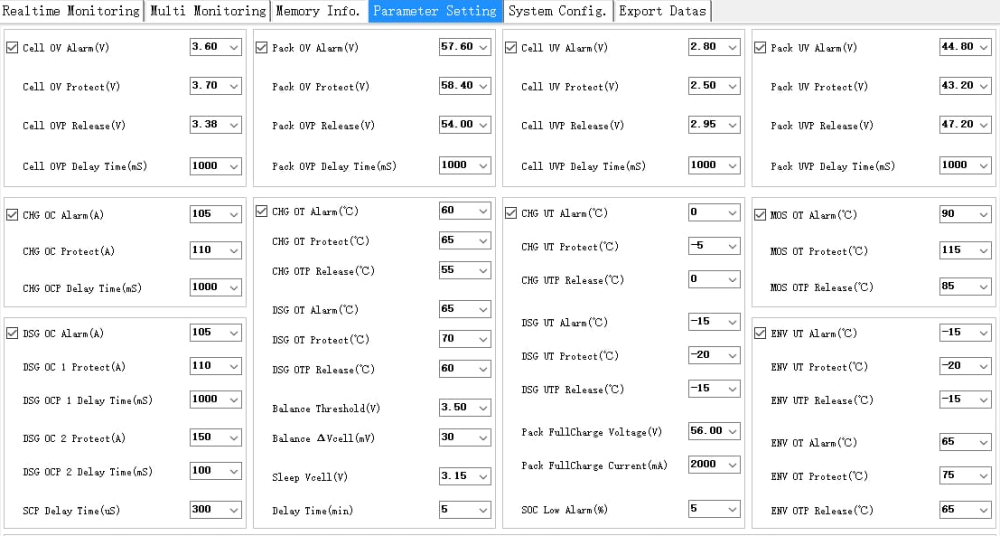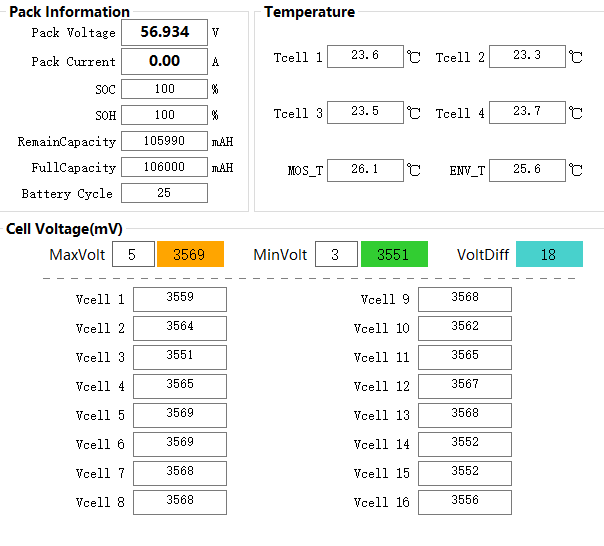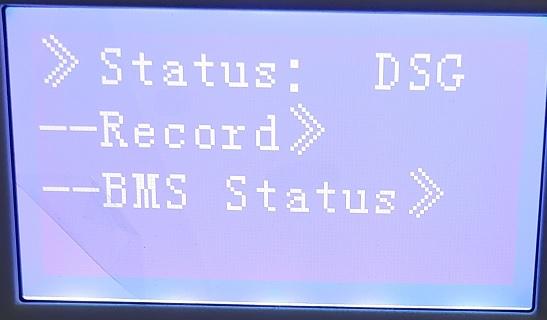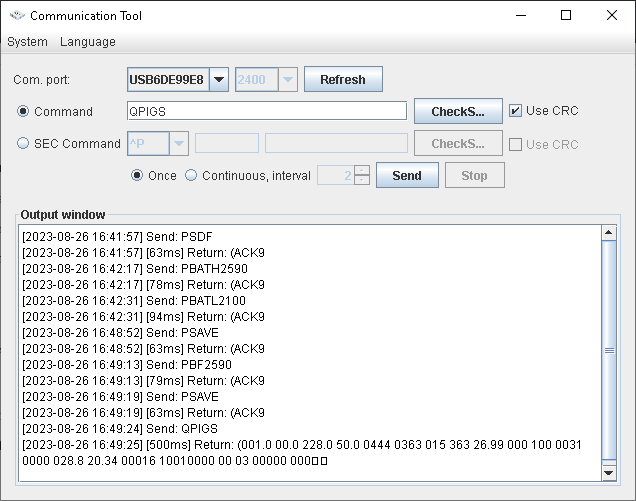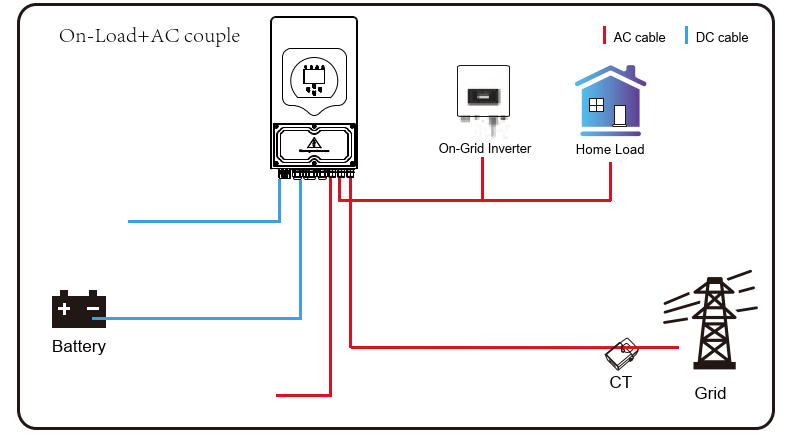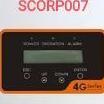Search the Community
Showing results for 'Battery Balancer HA12 Bluetooth'.
-
How important is temperature control for LiFePo4 batteries? I know a to big DOD (like 90% to 80% has a big impact), But what regarding temps? I try to keep my cells below or around 20 to 25 degrees Celsius, but a friend of mine has Pylontechs in a container, and on days like yesterday (27C) the temps of the cells go up to around 31C. In summer it will be 40, 42C, so the temps will go up significantly. Will the lifespan go down much? I told her to invest in a small airco, and run that during the day, that would be greatly appreciated by her batteries. I'm I right? THANKS!
-
Hi Guys Have just done a video on adjusting your inverters battery settings based on the load shedding level being reported by ESP. You can customise as many different configurations as you want and switch between automatically based on the Load Shedding Level being reported by ESP. Please let me know what you think of the automation, am still working out how all this stuff works and not an expert by any means so all advise/suggestions are welcome. At the moment, the settings you can change are the work mode time zone SOC levels, the time zone - grid charge toggle and the load/battery priority setting.
-
Hello I have read through the Deye manual but find the information, or "English" used a bit confusing What is the point of the Battery First vs Load First option? If "Load First" is solar power used to power your house directly and then excess power used to charge the battery? Similarly if "Battery First" then solar power is used to charge the battery first then excess power used to supply the house load? I was under the impression that the house load is always supplied from the battery and the battery is just then charged by either solar or grid but I guess this is perhaps not true in the scenario where you don't have batteries? Thanks
-
Item: Pylontech US3000C Li-ion Battery, 48V, 3.5kW Age: 3 years Price: R15,000 ONCO Payment Method Accepted: On collection Warranty: 7 years of original 10 year warranty left Packaging: original Condition: Good - Reported Condition = 94% Location: Durban Reason: Have upgraded to a 5kw battery Shipping: Not included Collection: Allowed Link:https://en.pylontech.com.cn/products/c23/121.html
-
Batteries. A rather important and crucial part of a residential solar system, especially here in South Africa. I was originally going to go the DIY route and even purchased some 184ah Svolt cells with the BMS and all other accessories necessary although something came up which lead me to sell the cells, skip the DIY batteries for now and look at purchasing already built batteries – this is where the Svolt 106AH batteries come in. When I found out Svolt had an office open up in South Africa and they were selling batteries locally, my interest was naturally piqued as I already had some of their 184ah cells. Svolt is also a rather large company and they make cells for the EV market as well and Svolt will be supplying BMW with cells for their EVs in the future, along with CATL & Eve Energy. Before I continue I want to state that I do not have any affiliation with Svolt. I do not work for them, I paid for all of my batteries, I do not get any kickbacks from them – nothing. I am just a client of theirs. After reaching out to them and getting more info, I was invited to their Johannesburg office to view their batteries and other products (inverters). I had a brief chat to the guys and decided to purchase one of the 16 cells 106AH batteries to try out and see how it performs. Taking it out the box, the battery looks really nice, the wall mount is simple yet effective, it comes with a nice set of cables and the crimps seem to be done well (as expected), the power connector which is used for the battery is very convenient and easy to connect / disconnect the cable from the battery. Unfortunately I did not take pictures and mine are already connected, I do not really feel like disconnecting everything to take pictures but if you guys would like some pictures then let me know and I will make a plan to take some. The battery has a nice button to turn it on/off and a screen to display some info from the BMS and once can easily navigate through the menu with the buttons. Here is the Svolt catalogue which has the specifications for the batteries: https://www.dropbox.com/scl/fi/69c9wnxrklmhc4xg9nn6c/Svolt-Battery-and-Inverter-Catalogue-20230803.pdf?rlkey=z8q9we55gzzs31e9wh3tw5ahp&dl=0 I believe all the batteries make use of a Pace BMS. The Pace BMS is very popular with pre-built batteries and are used in many different brands of batteries. Andy from Off Grid Garage did a review one of the Pace BMS’s and you can watch it here: At first I had some issues getting the battery to talk to my Luxpower, however Svolt confirmed that their batteries do communicate with the Luxpower inverters as well as majority of other inverters (MUST, Conderenergy, Growatt, Sunsynk / Deye, Victron, Svolt, Luxpower and more). The BMS has different options which Svolt can change for you to ensure it works with your inverter. By default it is set to Pylon which works with majority of inverters. After reaching out to the Svolt guys and speaking to one of their technician staff, they decided to come through to my house to take a look and try figure out what the issue was – pretty impressive from a customer support point of view. Turns out it was a very silly mistake from my side, the dip switch was not configured properly (I left them all down as per the manual, where dip switch 1 should be in the up position). As soon as we did that, the comms started working – I had to use the battery without comms for a few days before Svolt came to my house and it worked well like this too. After getting the battery comms working I was finally able to use the battery as intended with communication to my inverter. The battery is 1C rated, with the communication it sets the max charge / discharge limit to 95A which is technically not the full 1C rating limit but it is close enough for me to not be bothered by it. 95A x 51.2v = 4 864W so just short of a full 5KW but if you were to have a 5KW inverter how often would you be running it at its limits when there is no grid? I was able to access the BMS info via PBMSTools and below is a screenshot of the parameters: I ended up purchasing 2 additional batteries, so that is 3 batteries in parallel and to get them connected in parallel is super easy. Adjust the dip switches as per the manual, connect them with the network cable supplied in the box and it just works. The BMS and inverter speak to each other and my limit now changes from 95A to 285A (as the limit is per battery, obviously keep in mind that you need to ensure the cables you use can handle the max current and obviously your inverter(s) too). Out of the box I did have the cells being imbalanced, however I am quite impressed that the BMS was able to balance the batteries. Since it does not make use of an active balancer it can take a bit of time but it did work and it did manage to get them balanced! At first I was a bit concerned that the BMS would not be able to balance the battery and while it was balancing I was concerned it would not charge to the correct voltage, when I reach out to Svolt they said if that does happen they will be able to assist me and if the battery was in such a bad state that it was not usable they would replace it with a new battery for me (once again, I feel this is really good from a customer care point of view). I have not had to have any batter replaced though. Below you can see a screenshot of the cell imbalances: Here is a screenshot after a week where the BMS has managed to get them balanced: Here is a screenshot I took at the same time of my older battery, as you can see the cells were balanced rather well: My oldest battery has a total of 44 cycles only, so still early days but so far so good and I would not hesitate to purchase more of these Svolt batteries. Based on my experience with Svolt customer support I am not worried about a valid warranty claim being rejected. The technical staff are knowledgably and actually know what they are talking about as well. Svolt are still new in South Africa, the pricing on these batteries have been exceptional however I am not sure whether the price will increase with time as they become more established, I suspect this might happen as I have seen this happen with other brands but time will tell. I hope this helps those who are on the look out for batteries. If there is anything in specific you'd like to know which I have not included in this review, let me know!
-
Item: Averge CH48100 LFeLi 48v 100ah Age: 4 years Price: R8000 Payment Method Accepted: EFT Warranty: As Is Packaging: Non-original box Condition: Good Location: Randburg, Johannesburg Reason: Upgraded Shipping: No Collection: Yes Link: Averge's website no longer has the exact datasheet, this is the closest I could find: https://www.ecohub.co.za/media/brochures/Averge-Technologies-Lithium-Battery-SpecSheet2.pdf I'm selling my old work-horse battery, it has been going strong for all the time I've had it and never had an issue with it. I can provide any info needed on the battery, just ask. Cycles done: 1510 Capacity Remaining: 90ah From the pics below you can see that it doesnt have any errors and is operating normally. It was charged with quite a high float voltage so that's why you see the Over Voltage Protection activated 9999 times, but this doesnt affect the battery in any way. I also have data from SolarAssistant from the last 6 months showing that the battery was not drained all the way to 0% and was charged and discharged normally.
-
Hi all, I tried to do some calibration to my inverter's battery voltage reading, as it was consistently higher than measured with a multimeter or reported by the battery balancer. In the process, I think I may have made things worse... My inverter seems to use the PBATLXXXX and PBATHXXXX pair of commands (as it does not respond to the BTAX commands). I can't however see any difference when sending these, and doing a PSAVE. I've tried setting the voltage to that reported by multimeter with PBATH, with full batteries, as well as setting a PBATL voltage, admittedly not with empty batteries, but certainly a couple volts lower than the PBATH value. I can't get anything to stick - the inverter still seems to report what it wants to. I started off with the inverter reporting about 0.10-0.20V above the actual reading. Inverter was reporting 27.20V, with batteries reading at about 27.00V. It's now even worse, with the inverter reporting 27.50-27.60, when the batteries are at 26.60 - now I have a discrepancy of about 1 Volt! I'm afraid this also means the batteries are now not going to fully charge... I used the various commands in this post, which is how I came to find that PBATL/PBATH works for me... and also how I somehow made things worse. Some command must have changed a setting, yet retracing my steps and running various commands (including the "nudge" ones, if they worked at all) does nothing. I've tried all commands listed in the attached document, in various orders, followed by a save, yet nothing seems to change: SMV III 5K 232 Axpert KS&MKS&V&KING RS232 Protocol 20200102.pdf And also this one: The screenshot below is from during load shedding, so my batteries really are at 25.90V currently, the inverter reads them at 26.99V: What am I doing wrong? @Coulomb @BritishRacingGreen Maybe you have some knowledge on this? Or anyone else, please help?
-
Hi all, I've been using @kellerza's excellent code to read data from my SunSynk inverters into Home Assistant via a USB Rs-485 dongle. However, with the increase in sunlight here in the UK and the reduction in daily load, I'm in a position I can use excess solar to charge my car. I'm looking to implement this via an automation in Home Assistant, but I'm seeking a way to stop the inverters draining the battery when the combined house and car charger load exceeds available excess PV. I can't do this by writing to the battery BMS' as I have four banks of cells each with an independent BMS and only one of them communicates with the Inverter. I could add an HA interface to all of them via ESP32 but it would be quicker/easier for me just to ask the inverters to stop pulling from the batteries. I can't see any way to do this in the default sensor list, but digging through Kellerza's code I can see there seems to be a ModBus protocol sensor that might enable me to do it: ########## # Battery ########## SENSORS += ( TempSensor(182, "Battery temperature", CELSIUS, 0.1), Sensor(183, "Battery voltage", VOLT, 0.01), Sensor(184, "Battery SOC", "%"), Sensor(190, "Battery power", WATT, -1), Sensor(191, "Battery current", AMPS, -0.01), # Charge and Discharge limit vary based on temperature and SoC Sensor(314, "Battery Charge Limit current", AMPS, -0.01), Sensor(315, "Battery Discharge Limit current", AMPS, -0.01), ) I found it here: src/sunsynk/definitions.py Documentation says the is read/write, can anyone advise me on how I can access/expose it via HA? Thanks!!!
-
Item Wanted: Pylontech US3000C Li-ion Battery Packaging Essential: No Desired Age: 2-5 years Location: Gauteng Willing to accept a shipped item: Yes Ballpark/Budget Amount: R12 000
-
I've read the threads on this issue but unable to find a definitive answer. Growatt SPF 5000 TL HVM / 2 x Dyness 5.12Kwh with BMS. The Growatt inverter cuts the PV input at 100% SOC. Then it discharges the battery to 95% SOC before allowing charging again. The problem is that between 100 and 95% SOC, the loads run off battery even if PV is available - thereby cycling the battery unnecessarily. So the definitive answer that I'm hoping for is, is there a software patch for this, or is this horrendous design flaw baked into the hardware?
-
Hi All I see many business sell the Svolts batteries, how good are they. I am a total dummy on these stuff. Just hear about C1 rating and everything. What rating is the Svolt 48v 5kw battery. I cannot seem to get the rating anywhere. For me the specs looks pretty much like a hubble and the other top brands but am not sure, tho difference is in the price though. Is it to good to be true? also is it strong enough to power a kettle and washing machine together for example?
-
Hi all, I am new on the forum and also very ignorant regarding the technical issues on my current inverter installation and settings and really need help. It is sad to advise that the people who did the installation and suppliers are unable to advise on the correct settings. I have manged to change some settings after reading the manual, but I have a feeling that there are settings which are not correct. My installation consists of the following: 1 x 5KVA RCT - AXVM3-5K48V inverter connected to 2 x US3000C Pylontech Batteries and 8 x Jinko/Tongwei 555W Mono Solar Panels and; 1 x 3KVA RCT - AXPERT 3K Inverter connected to 1 x UP2500 Pylontech Lithium Battery. Not connect to any Solar panels and only provides backup for lights. No issue with this. My objectives are: 1) Optimize the Solar and Battery Capacity. 2) Reduce the usage of Utility power to save cost. 3) Ensure sufficient Battery capacity during Loadshedding (Power Outages). I am running a small household for only two people with my Geyser charging from a separate Solar panel, but is also connected to utility power when needed (Geyserwise). Please note that my Stove are not connected to the inverter. It would seem that if I run on SBU mode and solar is not working in late afternoon, the batteries take over, but drops from 54V to 50V very quickly. Then soon after that the low battery alarm is sounded. 1 SBU 2 30A 3 APL 4 5 USE 6 LED 7 EFD 8 9 50 10 230V 11 20A 12 44V 13 51V 14 15 16 CSO 17 18 BOF 19 ESP 20 LON 21 22 AON 23 BYD 24 25 FEN 26 56.4V 27 54V 28 29 42 30 EDS 31 53.2 32 33 60 34 120 35 30D 36 ADS 37 NFE 93 NFE 94 10 95 47 96 3 97 21 98 4 99 24
-
I have installed 3 ARK2.5H batteries together with the Growatt BMS and a SPA10000TL3 BH-UP inverter in my house. I already had a single phase SolarEdge solar panel system HDwave 4kW, (unfortunately not possible to have a 3 phase system because I could not install enough panels at the time). This worked fine together, the Growatt charges the batteries when my current from the grid is negative (during the day when there is sun), and discharges at night. I have checked this for a few weeks and works perfect, the Growatt keeps the use at 0W by feeding back into the grid at the same time. I recently added a 4th battery to make it a 10kW system, and although I didn't check it as often as before, everything seemed to work fine. Most of the time still had enough capacity left in the morning. So now this week I added a 5th battery to make a total of 12,5kW, but now in the morning the batteries were completely depleted. Strange enough when I went to bed the capacity was at 81%, and while using about 220W continuously during the night, at around 4 oclock in the night the battery level completely dropped to 10% while at that time it should have used max around 1,5kWh total. I checked today during charging, and as it slowly rose to around 36%, it suddenly jumped to a 100%. I have no idea why this now happens. The voltage is correct at 265V total for 5 batteries. I also disconnected the last battery to test, but it didn't change a thing, except for lowering the voltage to around 210V. Anyone an idea on how to solve this?
-
Item: Livoltek Battery BLF51-5wkh - requires inverter with Livoltek CANbus protocol or it will shutdown after 20s Age: 2 years Price: R12k Payment Method Accepted: Realtime EFT on collection Warranty: no Packaging: no Condition: great - completed less than 50 cycles and recently serviced and upgraded BMS by Livoltek Location: Sandton Reason: moved offices to location with backup power Shipping: if you can arrange as it weighs 60kg Collection: yes User_Manual_Battery_BLF51_IP21_v2_3.pdf
-
Can an off grid Axpert inverter be scheduled to charge the battery from 2 to 6am to use night time low rate electricity?
-
Continueed from an old thread as I thought might be beneficial on its own thread. Got 2x 100amp cylinder ceramic fuses. For positive and negative between the battery and inverter They good enough? 12v lifepo4 axpert VM 1000
-
Hi everyone, I was hoping someone could give me some advice. I have a RCT-AXVM2 12v system and it just started giving me problems. For some reason it is reading the battery voltage incorrectly. My battery via Bluetooth and using the multimeter is reading say 13.2v but my inverter is sensing 14.4v so only gives a trickle charge not enough to charge the battery. Interestingly enough I cannot even charger it from utility as well. It all started a few weeks ago when the inverter started clicking all the time. Looking at the display it is almost as if it is see between charging the battery and using the battery. I think this is because it constantly reads the voltage incorrectly. Any ideas or suggested fixes it would be really appreciated.
-
There was a short in one of our ac outlets connected to our inverter which was tripping it. It seems to have melted the fuse holder. Interestingly it did not break the fuse. Anyone know what is going on here? I've sorted out the short. Waiting to find out more before I connect the battery. Don't want to blow the Bms.
-
Good evening all, I purchased 2x100ah 12v lfp batteries around 8 months ago. They are connected in series with battery balancer for my 3kw system used in the visitors cottage. All is working well but have a concern about the 1 battery cell difference. Both where balanced up to a week ago when i noticed cell 1 was charging up faster than the other 3 cells and discharging faster. My system: *2 x 100ah 12v Revov batteries in series. *RCT 3kw 24v VMIII inverter. 4 x Seraphim SIV 460 Wp Mono Silver Frame Solar Panels. Below screen print of Bms. Help would be appreciated. Regards Derek.
-
Hi all Im struggling a bit with the above mentioned combo. Client bought two five star 7kw?h batteries. It worked fine on an fivestar inverter. The inverter gave endless problems though And we replaced it with a sunsynk 8kw. I cant get the inverter to charge the batteries nor to keep the power on if ac is turned off. no timer settings being used. grid charge ticked. Using AGMv settings. No comms port on battery for bms so have to work on agm settings. anyone that maybe has some advice on what to check next? Kind regards Be4dawn
-
on my MUST hybrid inverter; If my battery runs out and results in a fault "battery voltage is too low", my expectation would be that after the sun comes and starts charging again via solar, the inverter should be able to switch itself on again. This is not happening and I am not able to configure this desired behavior via the settings. any ideas?
-
Hi everyone So I recently got a deye 8kw hybrid inverter with 3x 5kw Hubble batteries and 16x 550w pv I see that during the day it charges my batteries till 72% , and from my understanding is that one should never charge till 100% which I get but I want to change that 72% to at least 90% before it gets to the evening as the batteries last till about 5am and sunrise now in winter is late (being the max drawdown at 35% then it trickle charges from Eskom ) I will be getting another battery but for now can anyone help guiding me through it , I tried the manual but when it comes to Amps and Volts I’m lost
-
Hi Guys I found this Github collection for connecting up ESPHome with Battery BMS's that I thought some of you guys might find useful. I have BSL batteries so I am just trying to work out how to enable comms on the RS485 port works, I think it has to be done using PBMS Tools, anyone know? It includes repositories for: esphome-jk-bms Public ESPHome component to monitor and control a Jikong Battery Management System (JK-BMS) via UART-TTL or BLE esphome-basen-bms Public ESPHome component to monitor a Basen Battery Management System via BLE esphome-ant-bms Public ESPHome component to monitor and control a ANT-BMS via UART esphome-virtual-can-bms Public ESPHome component to emulate a SMA/Victron compatible BMS via CAN bus esphome-jbd-bms Public ESPHome component to monitor and control a Xiaoxiang Battery Management System (JBD-BMS) via UART-TTL or BLE esphome-tianpower-bms Public ESPHome component to monitor a Tianpower Battery Management System via BLE esphome-seplos-bms Public ESPHome component to monitor a Seplos Battery Management System (Seplos-BMS) via UART or RS485 esphome-pace-bms Public ESPHome component to monitor and control a PACE Battery Management System (PACE-BMS) via RS485 (Modbus)
-
Hello. I know that I have a bit of a peculiar configuration, but I believe that it should work correctly, yet I can't manage to make it work. This is the simple design of my installation: In the Home Load side of the Deye inverter there are 2 micro-inverters (1 GoodWe 2500xs and 1 APS 500). The hybrid Deye inverter and battery are installed in a semi permanent way in my current home and I installed them next to the electrical board. The two micro-inverters are installed in the attic and have very difficult access, so I don't want to mess with the current installation as I plan to sell this home and leave the micro-inverters and panels installed, taking the new Deye inverter and battery with me. So, the Deye inverter has no panels connected to it. This issue I'm having is, no matter what I configure, I cannot avoid the generated energy from the old inverters to flow to the grid instead of charging the battery. One way I found to charge the battery was to manually force the charging from the grid, but that way I cannot balance the charging power with solar production. Another way I found was was to disconnect the Deye from the GRID and it charges the battery as expected, both are not solutions. I believe that there may be a firmware bug here, but I didn't find where to download the firmwares on the Deye site to compare with the version I have and maybe check the list of fixes. Note: the CT is installed, but I understand that it shouldn't be necessary as the GRID input of the inverter is directly connected without any other connections in-between to the GRID. Do you have any ideas on how to overcome my problem, preferably without doing any re-wiring? Thanks in advance. Cheers.
-
May be we can learn something from the auto industry. The unknown in this research is what sub type of lithium were tested. Cycles look like NMC.





